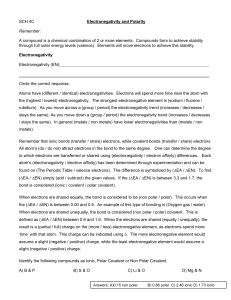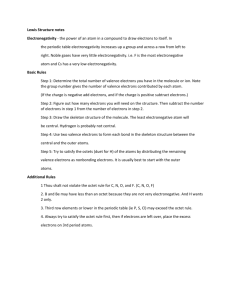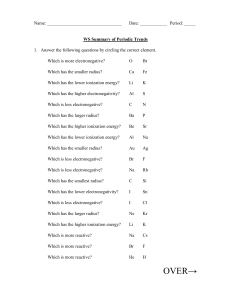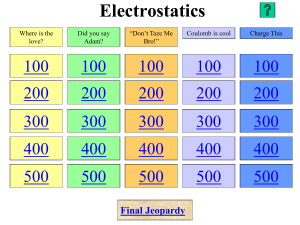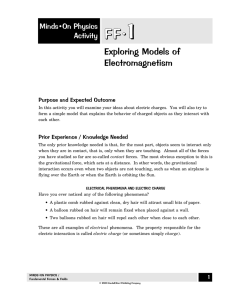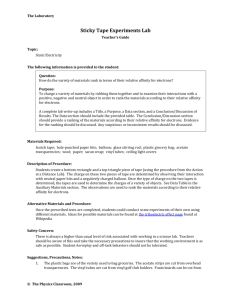this Word file
advertisement
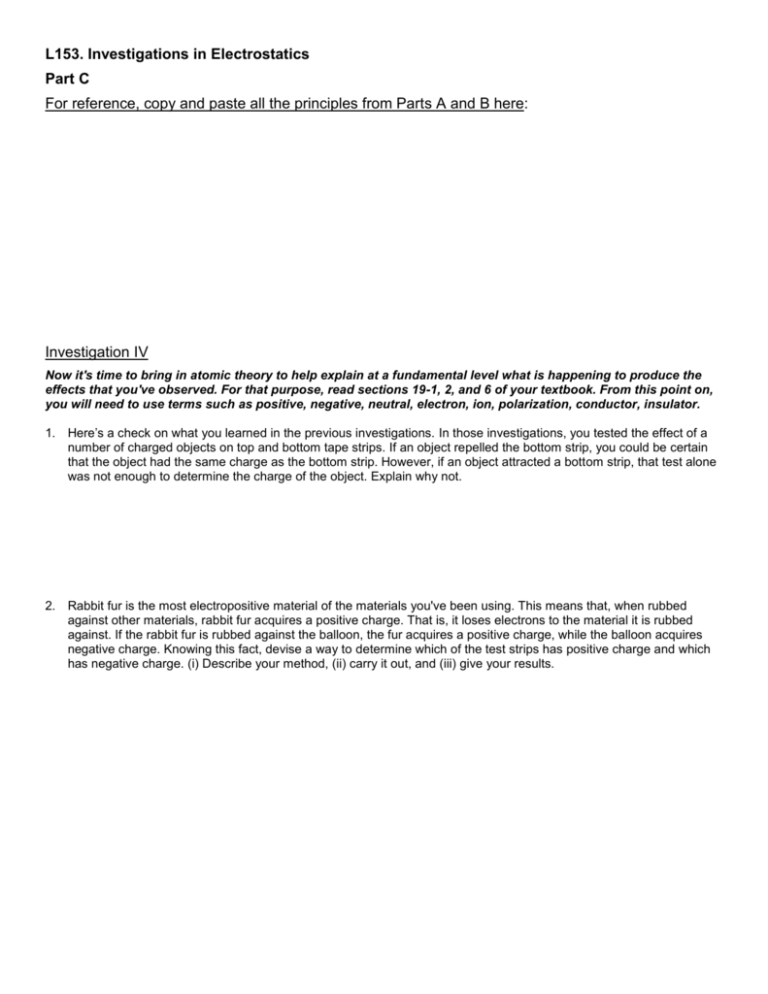
L153. Investigations in Electrostatics Part C For reference, copy and paste all the principles from Parts A and B here: Investigation IV Now it's time to bring in atomic theory to help explain at a fundamental level what is happening to produce the effects that you've observed. For that purpose, read sections 19-1, 2, and 6 of your textbook. From this point on, you will need to use terms such as positive, negative, neutral, electron, ion, polarization, conductor, insulator. 1. Here’s a check on what you learned in the previous investigations. In those investigations, you tested the effect of a number of charged objects on top and bottom tape strips. If an object repelled the bottom strip, you could be certain that the object had the same charge as the bottom strip. However, if an object attracted a bottom strip, that test alone was not enough to determine the charge of the object. Explain why not. 2. Rabbit fur is the most electropositive material of the materials you've been using. This means that, when rubbed against other materials, rabbit fur acquires a positive charge. That is, it loses electrons to the material it is rubbed against. If the rabbit fur is rubbed against the balloon, the fur acquires a positive charge, while the balloon acquires negative charge. Knowing this fact, devise a way to determine which of the test strips has positive charge and which has negative charge. (i) Describe your method, (ii) carry it out, and (iii) give your results. 3. Which of the following objects is neutral: balloon, aluminum foil, Styrofoam, Plexiglas? (That is, it affects top and bottom strips the same way no matter what you rub it with.) Give an explanation for your results. It's both appropriate and necessary at this point to use some of the concepts from the textbook reading. 4. Many of the materials that you've been using can be arranged in an electronegativity series. (See Table 19-1 in the text for an example.) Rabbit fur would be the least electronegative material (or most electropositive) material in such a series. It's important to understand that electronegative and negative (or electropositive and positive) do not describe the same property of a material. Electronegative describes a materials ability to acquire electrons. Negative describes the excess of electrons that a sample of a material actually has. Thus, material X may be more electronegative than material Y, but material Y can have a greater negative charge than material X. Suppose, for example, that you have three initially neutral samples of materials A, B, and C and want to arrange them in an electronegativity series. After rubbing A against C, you test both materials with test strips. You find that A is positive and C is negative. That means C is more electronegative than A, because C took electrons from A. Next, you rub B against C and test both materials with test strips. You find that B is negative and C is positive. The charge of C changed after being rubbed with B. That means B is more electronegative than C, because B took electrons from C. The electronegativity series from most to least electronegative would then be B, C, and A. If you rubbed materials A and B together, what would their charges be? Explain. 5. Why wouldn't the method just described work to determine the position in an electronegativity series of the aluminum foil or pie plate? 6. Carry out the experiment described in step 4 to order these materials in an electronegativity series: balloon, Plexiglas, Styrofoam. Much rubbing may be required to make a material switch from one charge to another. This seems to be particularly true of the balloon and Styrofoam. Describe your method and give your observations and results.

